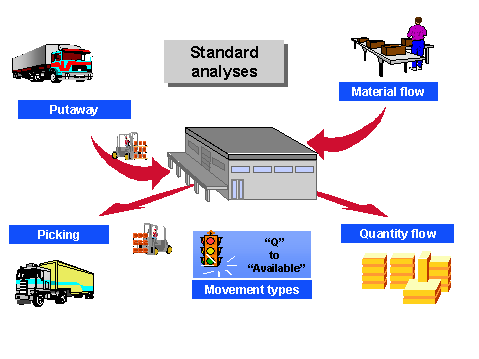Warehouse management systems (WMS) serve as a crucial tool for businesses that deal with inventory and logistics. Implementing a WMS can greatly enhance operational efficiency, improve inventory accuracy, and streamline order fulfillment processes. In this article, we will explore the key aspects of WMS implementation and how HTML markup can be used to optimize its effectiveness.
What is a Warehouse Management System (WMS)?
A Warehouse Management System (WMS) is a software application that helps businesses manage and control their warehouse operations. It provides real-time visibility into inventory levels, improves inventory accuracy, and automates various warehouse processes such as receiving, picking, packing, and shipping. A WMS also enables companies to track and manage the movement of goods within the warehouse, ensuring efficient utilization of space and resources.
The Benefits of Implementing a WMS
The implementation of a WMS offers several benefits for businesses:
Improved Inventory Accuracy: A WMS enables businesses to track their inventory in real-time, reducing the risk of stockouts or overstocking. With accurate inventory data, companies can optimize their order fulfillment processes and prevent revenue loss due to inventory discrepancies.
Increased Operational Efficiency: Implementing a WMS automates various warehouse processes, eliminating the need for manual tracking and paperwork. This leads to improved operational efficiency, reduced labor costs, and faster order processing times.
Streamlined Order Fulfillment: A WMS optimizes the picking and packing processes, minimizing errors and improving order accuracy. This leads to faster order fulfillment, higher customer satisfaction, and increased repeat business.
Optimized Space Utilization: By tracking the movement of goods within the warehouse, a WMS helps businesses efficiently utilize their warehouse space. This ensures optimal storage allocation, reduces the risk of misplaced or lost inventory, and maximizes overall productivity.
Data-driven Decision Making: With a WMS in place, businesses have access to real-time data and analytics related to their warehouse operations. This enables informed decision-making, such as identifying bottlenecks in the supply chain, optimizing inventory levels, and improving overall warehouse performance.
Steps Involved in WMS Implementation
Implementing a WMS requires careful planning and execution. Here are the key steps involved:
1. Needs Assessment
Begin by assessing your business’s specific needs and requirements. This involves evaluating your current warehouse processes, identifying pain points, and determining the functionalities and features you expect from a WMS. Engage key stakeholders, including warehouse managers, IT personnel, and other relevant departments, to get a comprehensive understanding of your organization’s needs.
2. Vendor Selection
Research and evaluate different WMS vendors based on your needs assessment. Consider factors such as system capabilities, scalability, ease of use, customer support, and integration options with your existing systems. Once you have shortlisted a few vendors, request demos and conduct thorough evaluations before finalizing your choice.
3. Data Migration and Integration
Prior to implementing the WMS, it’s essential to ensure proper data migration and integration with your existing systems, such as ERP or inventory management software. This involves mapping data fields, cleaning up existing data, and configuring the WMS to exchange data seamlessly with your other systems. HTML markup can be utilized to structure and format data during the migration and integration process.
4. System Configuration
Once the data migration and integration process is complete, configure the WMS according to your specific business requirements. This includes setting up user roles and permissions, defining warehouse layout and zones, establishing picking and packing rules, and configuring reporting and analytics capabilities. HTML markup can be used to design and structure custom reports and dashboards.
5. User Training
Provide comprehensive training to warehouse staff on how to use the new WMS effectively. Ensure that they understand the functionalities, workflows, and best practices related to the system. HTML markup can be utilized to create interactive training materials such as online tutorials or interactive user guides.
6. Testing and Quality Assurance
Before rolling out the WMS to the entire warehouse, conduct thorough testing and quality assurance to ensure that the system functions as intended. Test various scenarios, such as receiving, picking, packing, and shipping, to identify and resolve any potential issues or bugs. HTML markup can be employed to capture and present testing results and bug reports.
7. Go-live and Transition
Once testing is complete, it’s time to go live with the WMS. Plan for a smooth transition by gradually implementing the system in phases or by conducting a full cutover. Ensure continuous communication and support to address any post-implementation issues or user queries. HTML markup can be used in system documentation and support materials to provide clear instructions and troubleshooting guidelines.
Conclusion
Implementing a Warehouse Management System (WMS) can revolutionize your warehouse operations, leading to improved efficiency, accuracy, and customer satisfaction. By following a systematic approach and utilizing HTML markup effectively, businesses can ensure a successful WMS implementation that maximizes the benefits and minimizes disruptions. Evaluate your needs, choose the right vendor, plan for data migration and system configuration, and provide comprehensive training to your staff to embrace the transformation that a WMS brings to your warehouse.
